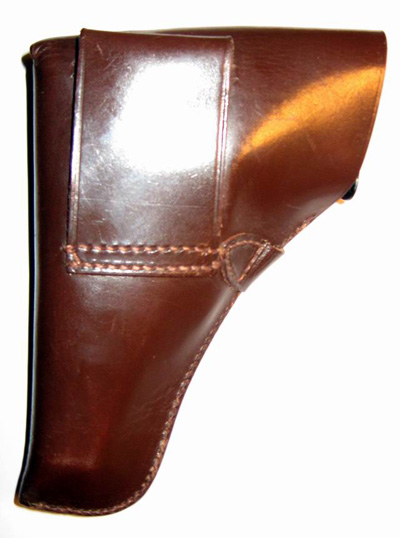| Remington Brand | Browning Brand | Winchester Brand | Mauser Gun |

|
|
Info Mauser Model HSc
Design and development of the Mauser Model HSc pocket pistol began in 1934 at Mauser-Werke in Oberndorf am Neckar, Germany. It was meant to replace their outdated single-action Model 1914/34 and compete against the highly successful Walther Model PP double-action pistol. After developing some twenty-two prototypes to the design, a final version of the HSc went into full production in December, 1940. Of historical interest, Mauser was fully prepared to commence production in 1938, but was held back by the Heereswaffenamt (Army Weapons Bureau) due to other wartime priorities. HSc stands for Hahn Selbstspanner Pistole (Self-Cocking Hammer or Double-Action Pistol) version “c”.
Mauser-Werke began production at serial number 700001. All WWII produced Mauser HSc's were marked at the factory with the complete six-digit serial number on the lower front grip strap. In addition, the bottom of the barrel breech was stamped with the last three digits of the serial number and the same three digits were electro-penciled by hand under the muzzle of the slide. German production of the HSc ended in the closing days of the war, on April 19, 1945, the serial numbers having reached almost 952000. This represents about 252,000 HSc pistols manufactured during the Nazi regime in Germany.
The first 1,345 pistols off the production line have become known as the Low Grip Screw (LGS) HSc due to the position of the grip retention screws near the bottom of the grips. About half of this initial run was procured by the Kriegsmarine (Navy), the balance sent into the Commercial market. The grip screws were subsequently moved up about ¾” and by serial number 701348, the Heer (Army) began procurement followed by the various Polizei (Police) organizations, including the Schutzstaffel or SS. The Luftwaffe (Airforce) purchased HSc pistols through the Heereswaffenamt and not their own departments. Military personnel not issued a sidearm often purchased pistols (including the HSc) in the commercial marketplace and carried them into the field.
Every Mauser HSc pistol produced during WWII will bear the factory firing proof (Beschuss-stempel) of an Eagle over “N” stamped on the right trigger guard web, on the front of the right slide and on the barrel breech block. Commercial pistols will have only these firing proofs. Pistols procured by a military or police organization will also have a specific acceptance proof stamped on the left rear trigger guard web. For example, Eagle over “655”, “135”, or “WaA135” for Army; Eagle over “L” or “F” for Police; and an Eagle over “M” on the front grip strap and later an Eagle over “MIII/8” on the left trigger guard web for the Navy.
From May 1945 to June 1946, the French occupied Mauser-Werke continued to produce over 19,000 more HSc pistols, primarily for their own troops in Indochina. These were serialized, without any skips from those made during the war, up to about 971239. No proof marks will be found, however, an interlaced “WR” internal factory inspection mark was stamped on most of the pistols in place of the military acceptance mark. By 1947, a major part of the factory was destroyed and the equipment transported to other Allied countries.
Finally, in 1967, after rebuilding its facilities, Mauser announced that it would resume HSc produc-tion. From October 1968 to December 1977, a total of 63,118 HSc pistols were made. This included 18,868 in 7.65mm (.32 ACP) using the new serial number range 00.1001 to 00.19868; 39,250 in 9mm Kurz (.380 ACP) in the range 01.1001 to 01.40250; and a special production group of 5,000 in both calibers, labeled the American Eagle Edition, to end the series.